
Taking Care in the Garden

Yes, you’ve read the title correctly - taking care in the garden. In addition to being a plant geek (obviously), I am also a safety nut. I half-joking, but really meaning it say “Safety first, safety always!” way more than most people probably want to hear. It’s cheesy, I know, but I think you know me well enough at this point to know that I am a pretty corny person - the saying should come as no surprise.
With the help of our Horticulture-staff-turned-models, I want to share some of the precautions and safety measures our staff takes in their day-to-day routines. Some of the measures are ones you may already take, while others may be worth considering for the next time you are out in your home garden.
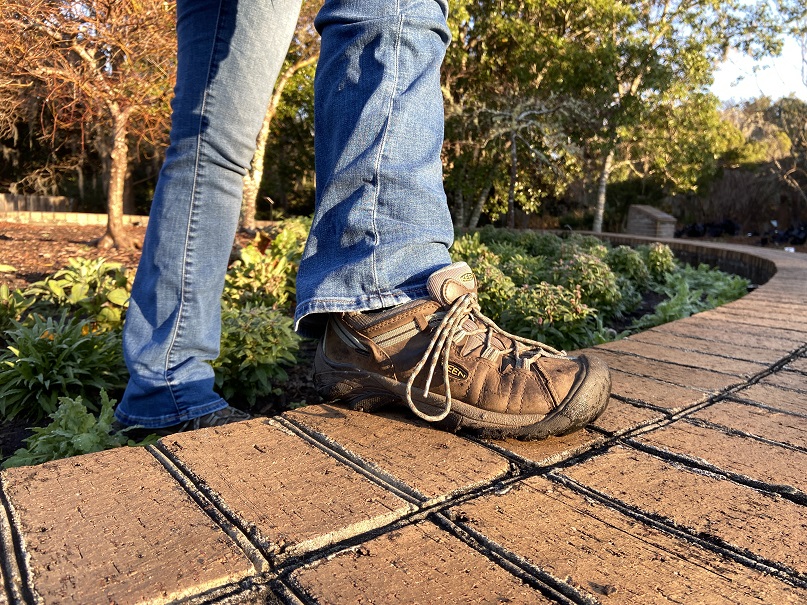
Let’s start from the bottom, courtesy of horticulturist and foot model, Jamie Williams! Your footwear is an important consideration when gardening. Generally closed-toe shoes are a good bet, but depending what you’re doing, you may want to look for something more rugged than simply a sneaker or tennis shoe, like a boot. Since it’s not uncommon for us here at Brookgreen to work in mud and boggy conditions, my mind naturally goes to waterproof options.
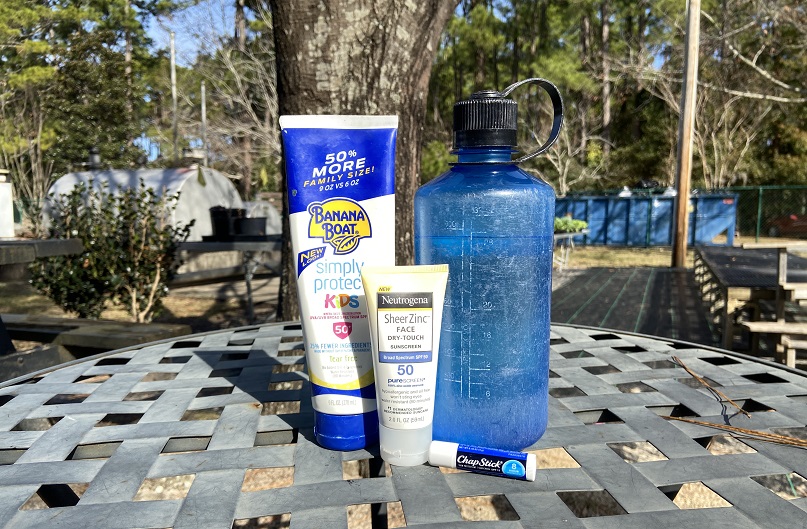
There’s nothing quite like coming in from a long, hard day of work in the garden, going to sit down and relax, only to realize you’ve gotten a sunburn and sitting, or really anything that involves contact with your skin, is painful! Sunscreen can often be an overlooked part of preparing for garden work, but one certainly worth considering. The picture above illustrates three different SPF products that I alone use! One sunscreen for my face, one for my neck and arms, and chap stick that includes sun protection.
And, not to ignore the elephant in the room (or in this case, photo), making sure to stay hydrated is a necessity when working outside. With our hot and humid summers, making time for a water break is not only refreshing, but important for keeping us in good health. Don’t forget to pack a water bottle!

I refer to this as my dorky hat. It’s huge, it’s borderline silly, but it keeps me very well covered from the sun. The wide brim provides a bit of shade in the summer too, while also keeping the sun off of my neck. Another added bonus? The mosquitoes, deer and horse flies, and no-see-ems (those annoying tiny flies you don’t see, but oh boy do you feel!) don’t tend to bite my head. They bite everywhere else, but my head is pretty well secured!

I remember when I was in horticulture school and took pride in not wearing gardening gloves because, you know I was so rough and tough and heck, I’m in horticulture school so I’m not afraid to get my hands dirty! Silly, silly Lucy. Wearing gloves is not a sign of weakness, it’s a sign of wanting to keep your hands protected! When you’re working with varied plant material, some of which can have caustic qualities, one of the last places you want it is on your skin. Plus, it doesn’t hurt to have a general buffer between your hands and what you’re working with - tough guy or not! Gardening gloves, modeled by Frank Hosier, our Manager of Horticulture, are another great item to include in your gardening arsenal.
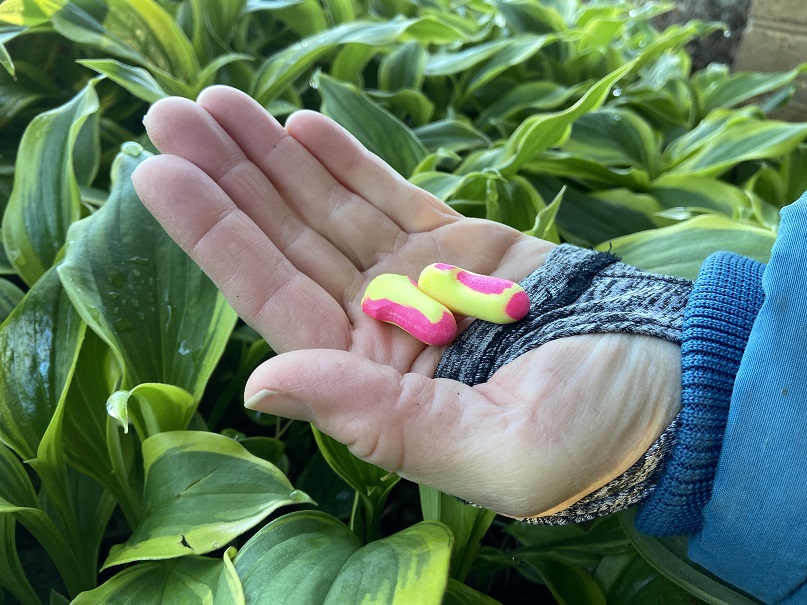
If you’re using power tools in your garden, like a lawn mower or a blower, ear protection is a worthy investment. Ear buds or ear plugs, modeled again by horticulturist Jamie Williams, are commonly used by our staff when it’s time to mow, blow, weed eat, edge, or generally use any sort of loud equipment.
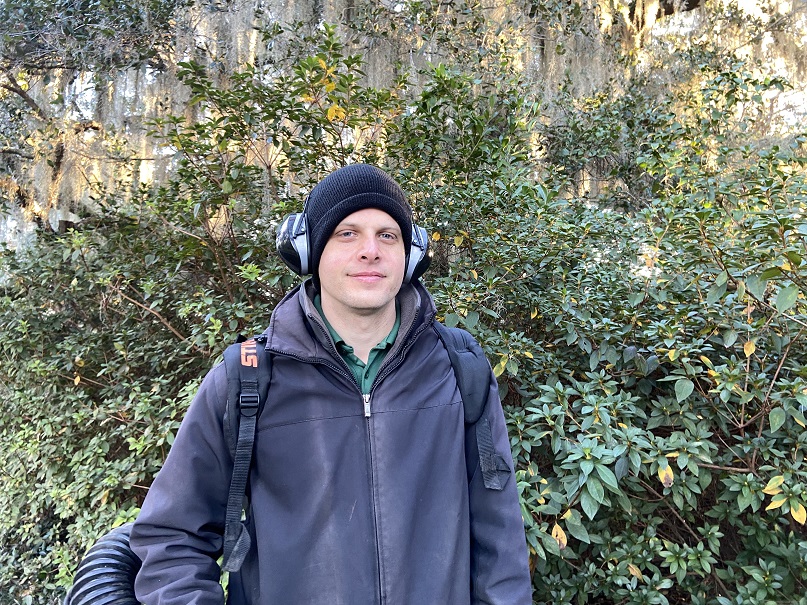
Ear muffs are another alternative for ear protection. Jason Flynn, gardener and model, can be seen showing off a cozy pair of ear muffs while he blows the garden walkways. While ear protection is a great piece of personal protective equipment to keep on hand, it is a good idea to do some additional research for what piece of equipment is right for your needs. Ear protection can vary in how much sound it blocks or dulls, and the machines you’re using will also dictate what kind of ear protection you need. For example, a push mower creates less noise than a chainsaw and your ear protection would vary between the two.
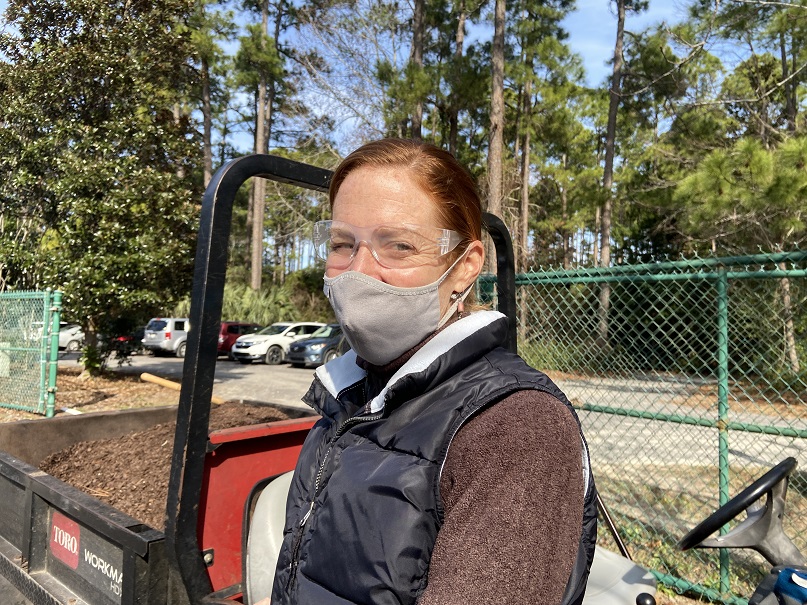
When I see safety glasses, like what Director of Horticulture and model Katherine Rowe is wearing, I think of two things: middle school shop class and the not-very-nice lightning bolt shaped key holder I made, and close calls of debris hitting off my safety glasses. One is arguably more frightening than the other (but I’ll leave you to ponder which takes the cake). Safety glasses, as well as goggles, are another important piece of your safety tool chest, especially when operating machines like weed eaters that can kick up mulch, rocks, and other debris.
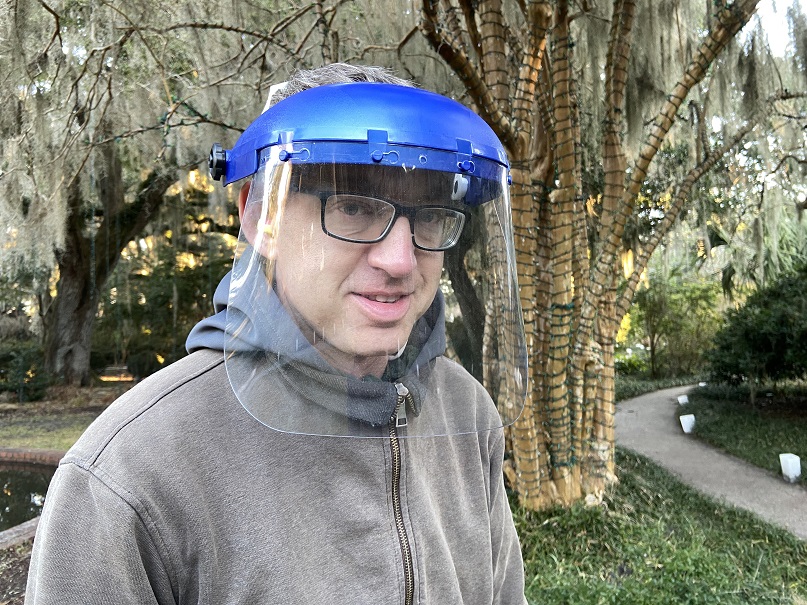
However, I am a sucker for a face shield. As someone who wears glasses and lacks the skill to operate a weed eater without giving myself a beating from the above mentioned flying debris, this is my go to! Horticulturist and model Jimmy Brandt shows the coverage you can get with a face shield while still donning glasses. I am forever indebted to the face shield that saved my face from the animal excrement that I can best describe as having exploded onto the entire front of my body while weed eating in the Poetry Garden a few years ago. To address the question I really hope you’re asking: I didn’t see it until it was too late.
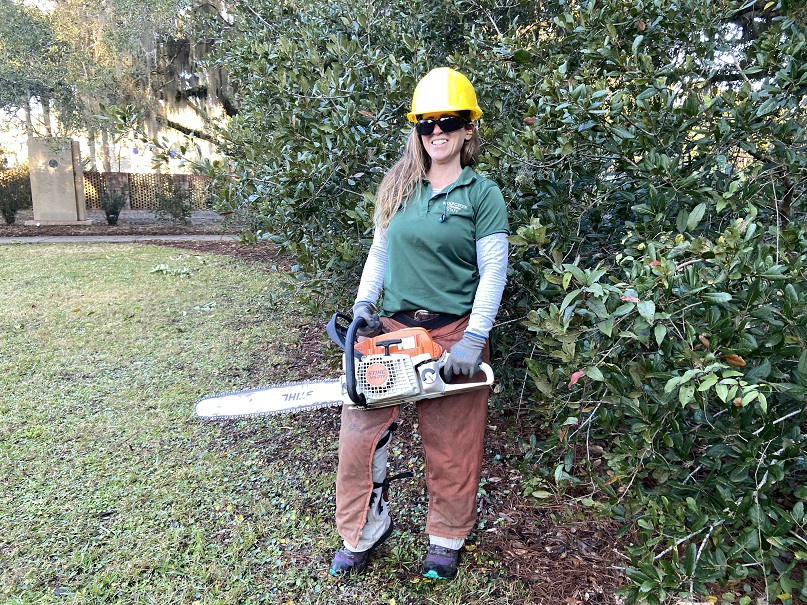
To round out our safety tour, Gina Davis horticulturist and model, is decked out in a ton of safety gear! As you can see, Gina is holding a chainsaw, a piece of equipment that requires a lot of personal protective equipment. Some items may be familiar, like the ear buds peeking out, the safety glasses, gardening gloves, and stable footwear. Since Gina is doing tree work, she is wearing a hard hat the protects her in the event any debris should hit her in the head. The orange pant-looking attire is called chaps, which is fastened around her pants to protect her from possible injuries from the chainsaw. These are all important parts of the safety ensemble when using a chainsaw, a very helpful, but notoriously dangerous tool.
While safety may have a reputation for being boring, it is worth keeping in mind when you are planning a day in the garden. Happy, fun, and safe gardening, everyone!
See you in the gardens!
Hours
Hours: Monday & Tuesday 9:30 AM - 5:00 PM
Wednesday - Sunday 4:00 PM - 9:00 PM
For daytime admission, gates close at 4:30 PM. For their safety and the safety of our animal collection, pets are not allowed, nor can they be left in vehicles inside Brookgreen. Service animals that have received special training to assist disabled persons are welcome.
Tickets
Daily General Admission Tickets for 7 consecutive days
Children 3 and under: Free
Children 4-12: $14
Adults 13-64: $25
Seniors 65 & Over: $23
Location
1931 Brookgreen Drive
Murrells Inlet, SC 29576
Off US Highway 17 Bypass, between Murrells Inlet and Pawleys Island on South Carolina's Hammock Coast
843-235-6000
GOOGLE DIRECTIONS